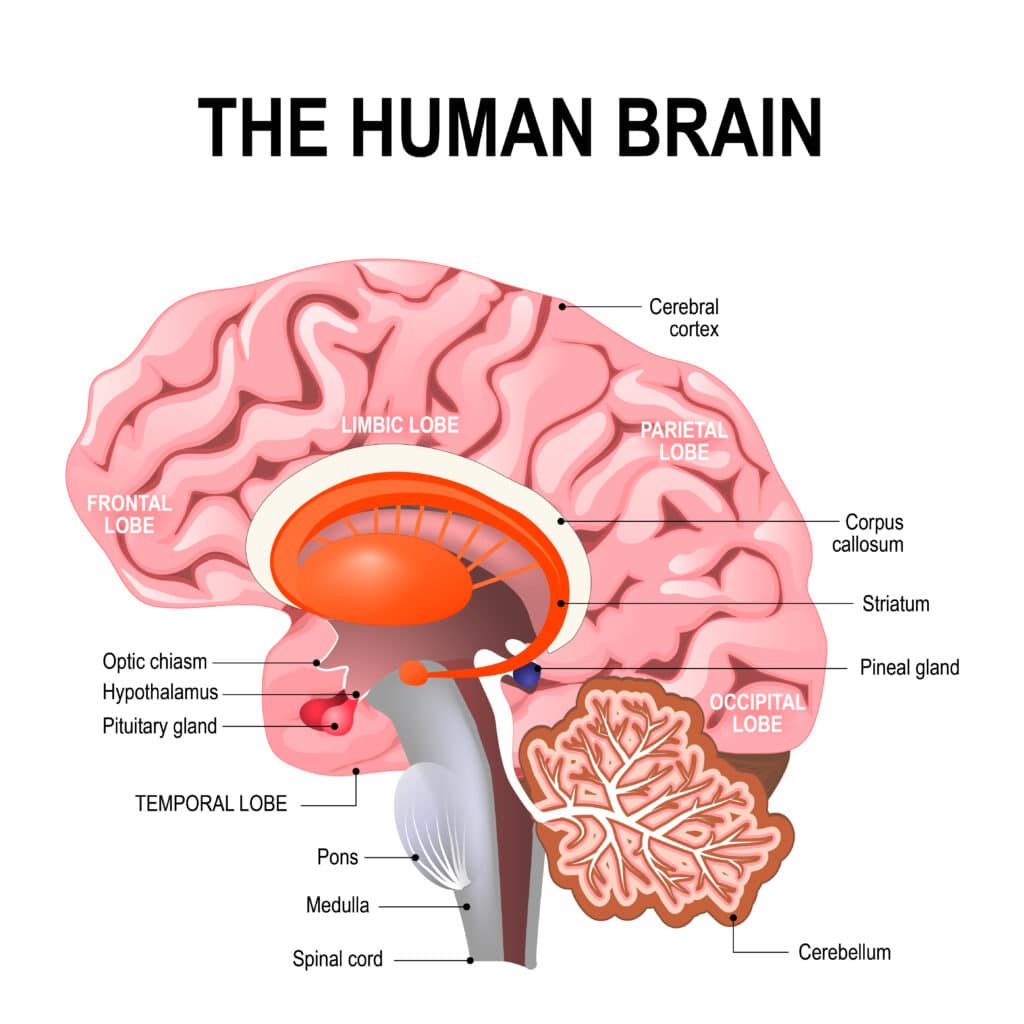The Reticular Activating System is either your friend or your foe as a teacher. I recommend making it your friend, and I’ve got 16 tips to help you activate the RAS in the classroom.
What is the Reticular Activating System?
First, what is the Reticular Activating System?
I’ll explain it as if you were ten years old, in case you want to explain it to your students. If you want the grown-up version, scroll down.
The reticular activating system, or RAS for short, is like a special filter in your brain that helps you pay attention to important things and ignore things that are not as important.
Think of it as a guard at the entrance of a party. The guard decides who gets to come in and who doesn’t. In your brain, the RAS is like that guard. It helps decide which information gets into your brain and which information gets filtered out.
The RAS helps you focus on the things that matter to you at a particular moment. For example, when you’re in school, it helps you pay attention to your teacher’s voice, the lessons being taught, and the words in your textbooks. It helps you ignore distractions around you, like noises outside the classroom or what your friends are doing.
The RAS also helps you notice things that are important to you. Let’s say you’re really excited about a new video game. Suddenly, you start noticing advertisements, news, and conversations about that game everywhere. It’s because your RAS is now tuned in to that topic, so it brings it to your attention.
Have you ever felt sleepy, and then a friend called and all of a sudden you’re wide awake? Yeah, thank your RAS.
Explaining the Reticular Activating System: The Adult Version
If you’re interested in the actual neuroscience (like me – I’m obsessed!), here you go:
The reticular activating system (RAS) is a network of interconnected structures located in the brainstem. It spans from the upper part of the spinal cord to the base of the brain.
The key structures involved in the RAS include the reticular formation, which is a complex network of nerve cells, and the thalamus, which acts as a relay station for sensory information. That’s why it’s a system – it’s not just one structure. This system helps regulate arousal, attention, and consciousness.
The RAS plays a crucial role in regulating sleep-wake cycles and maintaining a state of alertness. It receives information from various sensory systems and relays it to the cerebral cortex, impacting our level of consciousness and attention to stimuli we’re receiving through our senses.
It’s important to keep in mind that the RAS is part of a larger brain network involved in arousal and attention. Just like everything else in the body, it’s all interconnected.
I’m including an image of the brain in case you want to see where these areas are I’m talking about.

Why teachers should care about the Reticular Activating System
With its help, students are awake, alert and engaged.
If it’s working against you, students will be sluggish, sleepy and checked out.
So let’s say you’re interested in making friends with your students’ Reticular Activating Systems.
How do you do it? Here are 16 easy-peasy ways to keep any RAS in the vicinity of your teaching on high alert.
Try Subtle Changes:
First, you can make subtle changes in teaching methods. The first seven ideas are subtle changes you can make to students’ Reticular Activating Systems wake up (or stay awake):
- Vary the tone, speed or loudness of your voice. Don’t be the teacher in Ferris Buehler. Anyone? Anyone?
- Move around the room as you talk. When you’re going to make an important point, stand still, but as you’re conducting questioning or discussion, move all around – not just back and forth across the front of the room like a fish in a tank. Use your space.
- Gesture while you speak, using animated hand and arm movements or facial expressions. My grandparents are deaf, so I got a little head start on this, but anyone can make speech more of a full-body exercise. Don’t be afraid to make your gestures large. Break the plane of your body. (I’ve got a great article on using ASL in the classroom)
- Use a story to illustrate important concepts. Cull the media (even social media) for example stories. You can use celebrity relationships to explain virtually every principle of physics. Try it. I’ve thrown Justin Bieber off like 150 cliffs at very high velocity. On paper only, of course.
- Ask a question and then pause for at least five seconds, rather than for a shorter period. Use facial expressions to make silent commentary on the insightfulness of the question, put your index finger to your chin and look off into space, or widen your eyes as you wait.
- Use humor or an anecdote. Humor is a jolt to the RAS.
- Use topic-related visual aids as you talk such as photographs, cartoons or charts. Tangible objects are great – not all visual aids need to be (or should be) on a screen. The more common media becomes, the more power analog is.
Vary Activities
You can change the activities you use to further involve the audience. Here are five tips for achieving that:
- Get the students to participate in short review activities. Intersperse these throughout a lesson, as opposed to having an entire class period set aside for mega review.
- Ask the students to stand and stretch if they have been sitting for some time. Use brain breaks. You can get my free dice brain breaks here.
- Get them to draw simple diagrams on a whiteboard or piece of paper to represent what they have learned. Even better, teach a little visual notetaking.
- Ask them to create a question about the material you have delivered. Extra points if you use their questions on a quiz or test. I promise their RASs will wake right up when they see their question.
- Use quiz games. You don’t need to reinvent the wheel here – lots of games are already made.
Change the Physical Environment
You can also change the physical environment of the venue. This is an underrated and often ignored aspect of student engagement. The last four ideas address this:
- Change the layout of chairs from theater style to classroom style or to round tables, even within the same class period. Practice moving in and out of different arrangements quickly. Time yourselves.
- Add aromas such as lavender, citrus or apple to create a different atmosphere. Studies have have shown that peppermint improves memory and cognition. It works as either a smell (so use a diffuser to spread the scent of peppermint oil in the room) or eating peppermint candy. Obviously check for allergies.
- Play background music that either energizes or relaxes your audience. Search YouTube, Pandora or your music media of choice for “classroom music” or “concentration music.” Avoid music with words if you’re working. It’s competition for verbal processing, so stick with quick instrumental pieces.
- Decorate the classroom and change it up every now and then. Avoid sensory deprivation tanks that never alter. Really, if you take the borders off of your bulletin boards, is the paper underneath fifteen shades darker than the paper in the rest of the bulletin board? That’s a sign.
The Reticular Activating System Can Be Your Teacher’s Assistant
Once you understand what the RAS is and how it works, and once you’ve gotten some ideas for how to keep it happy (you’re welcome), you will find that it can be your right-hand man. You can fight against it with repetition and predictability, but I promise that neither you nor your students’ Reticular Activating Systems will have a very good time in class.
The boy in this picture might not have had enough sleep, but odds are that his RAS has told him there’s nothing going on worth paying attention to.
Take these 16 tips and keep your students awake, alert, attentive, and most of all, loving learning.
Hat Tip: I was inspired to write this post after reading Sharon Bowman’s The Ten-Minute Trainer.










